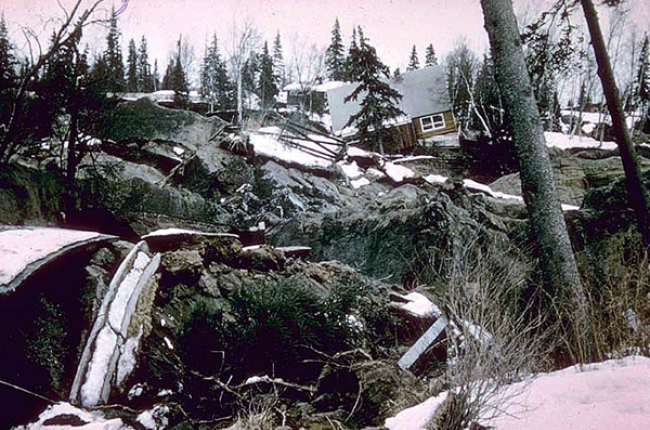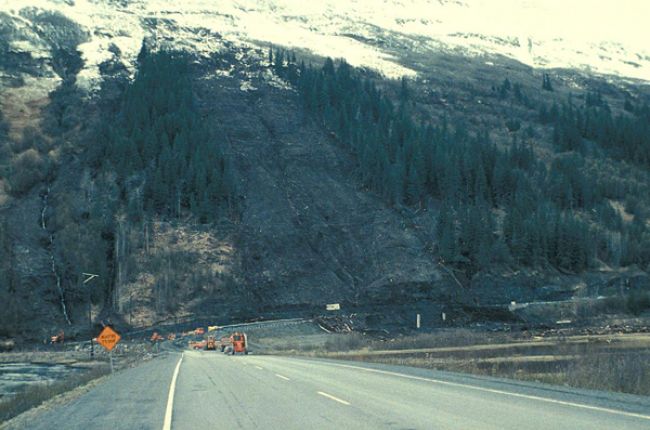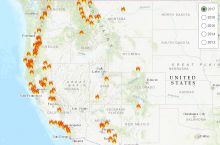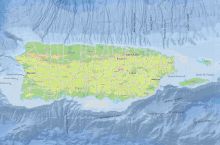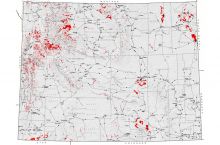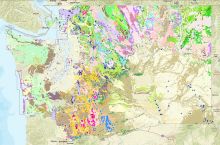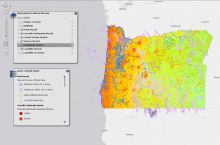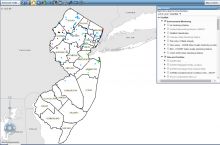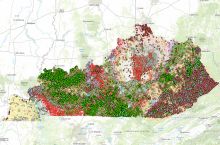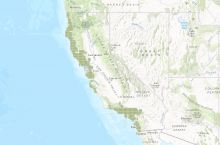Landslides are masses of earth, rock, or debris that move down slopes. Landslides are triggered by one event, but many causes can weaken slopes over time and make them more likely to fail when there is a triggering event. These causes can be both natural and artificial. Landslides often occur in areas with oversteepened slopes, weak soils/bedrock, or de-vegetated slopes (whether by human deforestation or natural events such as wildfires).[1] Some of the most damaging landslides are triggered by water, typically from intense short-term rainfall or long-term saturation of the slope. Both natural and human activities (such as irrigation or seepage) can saturate hillsides. Earthquakes and volcanic eruptions also cause damaging landslides.[1]
Why do landslides matter?
Landslides affect all 50 states and U.S. territories, though mountainous regions such as the Pacific Coast range, the Rockies, the Appalachians, Alaska, and Hawaii bear the most severe risk. The U.S. Geological Survey estimates that each year in the United States, landslides cause the deaths of 25 to 50 people and losses of at least $1 billion.[2]
How does geoscience help?
Geoscientists map areas that may move so homeowners and emergency managers can plan ahead. They map these areas by locating old landslide features, which indicate areas that have moved in the past. They evaluate the slopes’ vulnerability by studying their features such as soil, bedrock, slope steepness, vegetation cover, and water table height. They also study the triggers of both natural and artificial landslides.
References
1Landslide Types and Processes, U.S. Geological Survey, https://pubs.usgs.gov/fs/2004/3072/fs-2004-3072.html
2Landslides 101, U.S. Geological Survey, https://landslides.usgs.gov/learn/ls101.php
Learn More
Introductory Resources
- Landslides 101 (Webpage), U.S. Geological Survey
A definition of landslides, list of factors that can cause landslides, brief overview of where landslides occur, and discussion of why it is important to study landslides.
- Landslide Types and Processes (Fact sheet), U.S. Geological Survey
Provides an overview of the classification of landslides and a thorough list of landslide causes. Discusses the causes of the most damaging landslides. Includes diagrams of different landslide types.
- The Landslides Handbook– A Guide to Understanding Landslides (Handbook), U.S. Geological Survey
This comprehensive resource for a lay audience includes detailed information on types of landslides, where landslides occur, landslide causes, and landslide effects/consequences. Also includes extensive sections on evaluating landslide hazard, communicating landslide hazard, and techniques for mitigating landslides.
Resources for Educators
- Education Resources Network, AGI's Center for Geoscience & Society
Search for landslide resources in: Curricula & Instruction, Teaching Media
- NGSS Performance Expectations, Next Generation Science Standards
3-ESS3-1, 4-ESS3-2, MS-ESS3-2, HS-ESS3-1
- NGSS Disciplinary Core Ideas, Next Generation Science Standards
ESS3.B


